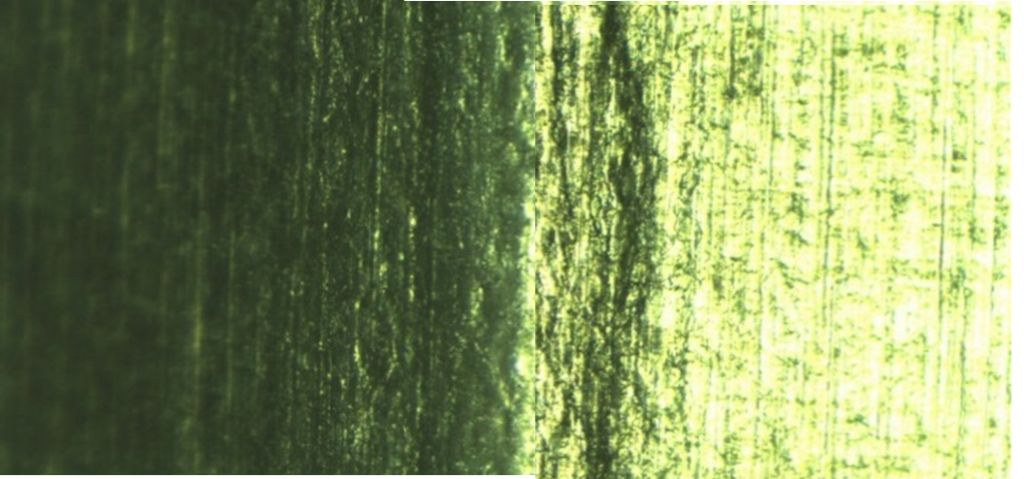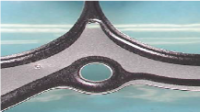In recent years, most of internal combustion engines are aiming for very high thermal efficiency such as 50% or more.
In such a case, lean burn technology or anti-nock technology makes the combustion control more difficult and not so stable in actual mass production engines.
Meanwhile, it has been also told that gasket performance is essentially “Compression and Recovery” characteristics with durability against fatigue stress of embossed plate as shown in below diagram.
But we, Japan Metal Gasket, found that these are points only of statistical point of view. Below is Load-Deflection curve of typical gasket.

But these kind of load - deflection curve of embossed plate for the compression and recovery characteristics will not tell us micro problems of gasket plate layers. Since 1980 JMG is considering as a “continuously improvements” against these issues. As a result of study of residual stress issue and the orange peel surface irritated portion of the bead formed area issue, we have made a deep study called “Control of Residual Stress on Bead Formed High Tensile Strength Spring Stainless Steel for Cylinder Head Gasket”. Cylinder head gasket which affected by the not stable combustion, durability of the gasket sealing becoming a big issue such as bore bead cracking of metal layered gasket.
One of a purpose of this description is to mention improved bead durability against fatigue stress crack by way of controlling residual stress in the bead formed metal layer and a special treatment of bore sealing area.
Investigation of residual stress and the stress relief method are the core technology to be studied. Such as fatigue crack of embossed plate, which affected by surface irritation so called ” orange peel”. And is also affected by surface residual stress of the bead plate. Below figure is showing the surface irritation of the bead formed plate in the valley area of the bead formed plate from the top of plate.

It was obvious that a smooth surface area was irritated in the bead formed valley area which induces fatigue crack of the bead formed plate. Therefore we proposed a special bead forming tool to avoid surface irritation and sometimes addition to the process by surface wet brusting treatment procedure to the irritation area.
Another purpose is a sealing , we will say a micro sealing, by elastomeric rubber coating is also always an issue of the gasket. More over by screen printing procedure of the rubber coating for open deck engine structure. Plus a dynamic seal performance based on both embossed plate characteristics and micro sealing elasticity of coating rubber with specific thickness and adhesiveness against the base plate which may affects seal performance by de-lamination of elastomeric coating were found. Against these issues, we Japan Metal gasket developed an epoch surface resin coating, we call it “ Top Coating” for protection of the coating. As shown in below figure the “Top Coating” on a partial screen printing rubber for embossed sealing area, will protect the de-lamination of the rubber coating against frictions and over loaded stress on the bead formed portion of the gasket plate.

As the result we conclude that an improvement of bead performance of function layer and also rubber coating sealing issues have to be studied in more micro point of view.





